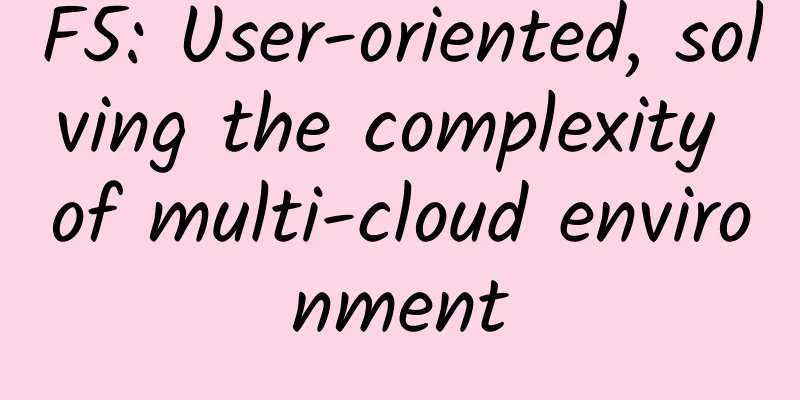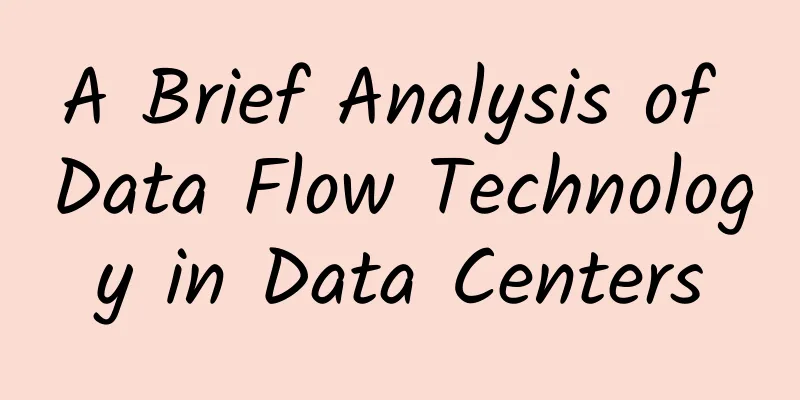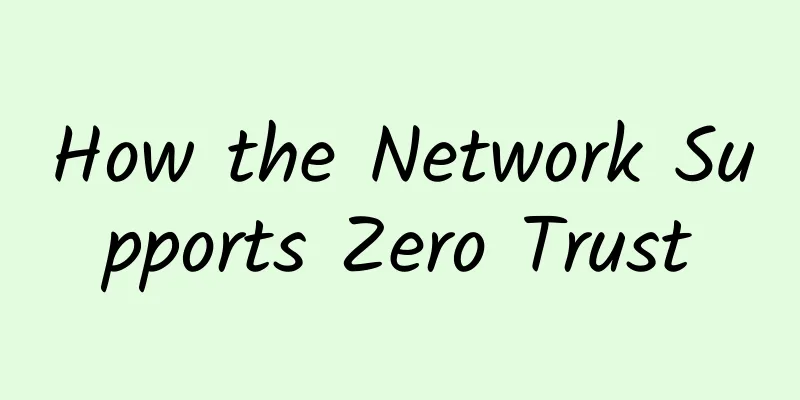F5: User-oriented, solving the complexity of multi-cloud environment

|
The fourth industrial revolution led by digital technology is here, and the wave of digitalization that follows is unstoppable. The arrival of the epidemic is like a reset switch. Only by accelerating digital transformation and realizing digitalization of business processes can enterprises adapt to the needs of the times and avoid being eliminated. Many business leaders believe that the epidemic has accelerated the digital transformation of enterprises by 5 to 10 times. As the global digital transformation continues to accelerate, "applications" play a key role in digital transformation. IDC research shows that the number of global applications will show explosive growth, from 1 billion in 2019 to 4.8 billion in 2025. The explosive growth of applications has brought a variety of opportunities to enterprises, including improving customer experience, developing new businesses, creating differentiated advantages, and accelerating innovation. At the same time, the explosive growth of applications has also brought huge challenges to IT architecture, including network security vulnerabilities, application modernization, and IT complexity. A market survey shows that 91% of people believe that traditional IT architecture and operating models are no longer suitable for digital enterprises, and enterprises must change their infrastructure. Indeed, most IT technology stacks that support traditional businesses are static and separated from products and services. Traditional IT needs to rely on manual processes to connect the scattered, independent, and static technology stacks, which greatly limits the ability of enterprises to expand digital business and network security. Digital business requires a controllable IT architecture. It is not enough to simply expand infrastructure and applications. Enterprises need to transform IT architecture, introduce application delivery, telemetry and application insights, SRE operations, and end-to-end digital security functions to build an adaptive, dynamic, and agile digital architecture framework, and provide digital services on this basis. With "user demand as the guide", F5's overall product line and technology development also focus on application security, application delivery, telemetry, and SRE automation, helping enterprises accelerate digital transformation in different stages and environments of transformation. Lin Geng, F5's global executive vice president, chief technology officer, and chief Chinese scientist, gave a detailed introduction in a recent interview. F5 Global Executive Vice President and Chief Technology Officer, Chief Chinese Scientist Geng Lin In a multi-cloud environment, how to support both traditional and modern applications? As digital transformation deepens, more and more digital businesses need to connect back-end systems based on traditional applications with cloud-based front-end modern applications. Therefore, it is an important development trend to establish a unified application delivery, application security, and application operation architecture to support both traditional and modern applications. In this process, enterprises face many challenges, such as the shortage of cloud skilled talents, the difficulty in implementing consistent security policies across multiple clouds, the low level of visualization of application operation status across multiple clouds, and the unsatisfactory application performance optimization across multiple clouds. F5 has flexible BIG-IP and NGINX solutions that can help customers easily migrate applications from the data center to the public cloud and integrate with different cloud infrastructures, whether through rehosting or reconstruction, or creating new cloud-native applications. F5's declarative application policy framework allows customers to "declare" their security policies, such as network application firewall policies, which can be consistently applied to all environments through BIG-IP, NGINX, and F5 distributed clouds. F5 also provides a unified telemetry and observability platform that allows customers to better understand the health of applications and improve the ability to optimize application performance. The traditional operation and maintenance model lacks flexibility. How to achieve modern operations? The traditional IT operation and maintenance model is not designed for cloud computing and distributed architecture, and is not suitable for the elastic architecture of cloud and distributed applications. The SRE (Site Reliability Engineering) team helps enterprises manage huge infrastructure through code, which is more scalable and sustainable for system administrators who manage a large number of machines. F5's NGINX software supports more than 400 million web servers and provides services for more than one-third of the world's websites. Coupled with BIG-IP products, F5's technology is present in more than half of the world's business workloads. This ubiquitous business footprint also provides F5 with application telemetry and application visualization capabilities. Without installing any agents, F5's unified telemetry and visualization platform can help customers understand the health of their applications. With the built-in service level objective framework (SLO framework), customers can run automatic monitoring and alert processes driven by event streams, allowing them to adopt an automatic operation and maintenance model like a cloud operator. In addition, whether the customer's application is deployed in a virtual machine, a container, or on bare metal, F5's orchestration technology can automatically perform application deployment and infrastructure configuration, allowing customers to easily expand digital services. With the large-scale deployment of edge architecture, how to improve the performance and security of applications? Today, more than 80% of enterprises have launched digital services to external customers, and most also plan to deploy application workloads and application services at the edge to improve application performance and security. F5's application security technology based on edge infrastructure can ensure the security of customers' enterprises. With F5's distributed cloud platform, customers can deploy F5's network application and API protection products on the enterprise's edge infrastructure in SaaS mode. The new cloud-native SaaS design provides application and API protection from the traffic entrance, thereby reducing the risks and costs of network attacks. Lin Geng revealed that in the next few years, F5 will also provide customers with more native functions of BIG-IP and NGINX in the form of SaaS on the distributed cloud platform. In addition, customers can also use the F5 distributed cloud platform to deploy edge-based workloads. Whether it is data processing workloads for the Internet of Things or distributed workloads oriented to digital experience, F5's solutions can support these workloads as long as they are deployed in the form of Kubernetes containers. With the prevalence of digital services, how can we achieve end-to-end security protection? To protect digital services, you must provide end-to-end security protection, not only to protect individual applications, but also to protect the interoperability between applications through APIs, and to protect users from identity fraud and automated bots. End-to-end security is more than just protection and prevention, a good security solution must support the detection of threats within digital services and respond in real time. F5's network application and API protection products can help customers protect the applications themselves and the interactions between different applications; anti-fraud and robot defense solutions can help customers identify and block fraudulent users and abusive robots; Shape and Threat Stack machine learning analysis technologies combined with observability data platforms can analyze and detect suspicious user behavior and respond to threats in real time. NGINX OSSub: A look at the innovative Chinese team In the 21 years of serving Chinese customers, F5 has continuously met the needs of Chinese customers for multi-cloud application services. For example, in China, the volume of NGINX business is about 2-3 million users, including 40-50 versions, and there are thousands of NGINX-based applications. In order to solve the characteristics of scattered, chaotic, and miscellaneous use of NGINX by Chinese users, and the lack of original factory services, and to better meet the needs of enterprise open source software governance, F5 launched the trusted open source NGINX Enterprise Edition (NGINX OSSub), which is not available in other countries in the world. F5 will also increase the promotion and training of NGINX technology to enable more people to make good use of NGINX technology. It can be seen that the F5 China team is a very innovative team that continues to innovate and iterate to meet local needs. Conclusion Digital transformation is an ongoing process. From the task automation stage to the digital expansion stage, and then to the AI-assisted business stage, F5 always follows customer needs and lays the foundation for enterprises to build perceptible and controllable digital businesses. In the future, F5 will use more innovative solutions to help enterprises achieve a smoother digital transformation. |
>>: Ruijie Networks releases "Digital Force Awakening Plan"
Recommend
Cisco fully opens a new era of smart office
Technology has revolutionized the human work expe...
Two questions to easily understand Riverbed's 2018 and 2019
[51CTO.com original article] Recently, Riverbed h...
WePC: 232 yuan/year Los Angeles VPS triple-network backhaul cmin2/9929/cn2, 512MB/10G NVMe/500GB@300Mbps
At the end of last month, I shared the informatio...
Huawei CloudEngine 16800 becomes the "new engine" of Beijing Institute of Technology's National New Energy Vehicle Monitoring and Management Platform
On August 9, 2019, Huawei held the "Unleashi...
EtherNetservers: Los Angeles VPS hosting starting from $12/year, supports Alipay/PayPal
In the past two years, fewer and fewer merchants ...
Juniper Networks MIST AI network solution gives network engineers "superpowers"!
[51CTO.com original article] Under the night, the...
RAKsmart March Promotion: Popular VPS starting at $1.99/month, E3-1230 dedicated server only $30/month
RAKsmart has launched a promotional event for Mar...
Thoroughly understand computer network communication equipment and protocols
【51CTO.com original article】 Table of contents 1....
Cisco unveils future networks that can self-learn, self-adjust and self-evolve
Cisco's next-generation network can continuou...
NBTC will hold 5G spectrum auction in June next year, 2.6GHz band will become the focus
According to foreign media reports, Thailand'...
How to build your private LTE network
Private LTE networks are becoming increasingly po...
Practice: Ping suddenly has high latency? Spanning tree architecture, the Cisco switch that is highly praised by network engineers is also suffering from the old sin!
Background Party A is a ship machinery parts manu...
Operations and Continuous Delivery
Operations and Continuous Delivery In the era of ...
NIST aims to make frequency sharing more efficient for wireless networks
Machine learning solutions will help different ra...
Frontier | The Internet of Vehicles security ecosystem is taking shape
Internet of Vehicles Security Requires a Platform...

![[11.11] CMIVPS 50% off for annual VPS, 30% off for dedicated servers, 20% off for top-up](/upload/images/67cac026052b7.webp)







